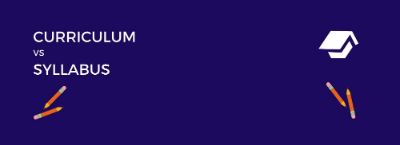We live in a world full of attractive opportunities: empty vacancies, scholarships, travel and study programs, etc. All those opportunities are unlocked with a knowledgeable approach to the first and most important step, applying.
Many non-employment processes, travel exchange programs as an example, admit the same applicant choice method as companies. You should submit the CV or Resume (read the difference later), participate in an interview, maybe pass a test.
Knowing how to write and present your CV to your target organization is an important skill that will come in handy for you in many situations. It's the same as knowing how to dress up, show up, and behave in the room where you want to impress everyone, but in online reality.
Your CV is you before the HR meets you personally. So, it should be representative and personalized to awake the wish to call and meet you.
You may be a freshly graduated person with no experience yet or a person with many professional achievements and skills to share. In both cases, you can strike or fail your application by not presenting a CV corresponding to up-to-date approaches.
So, read on to learn about CV sections, formatting and useful tips that will help you write a competitive Curriculum Vitae. Perhaps, this is our most universal article having a big portion of society as a target audience.
CV and Resume
A bit of terms clarification before we reach the main points.
CV and Resume are sometimes considered the same, and sometimes different. Both are correct, as it depends on the location you are applying to.
In all European countries, CV and Resume are synonymous terms indicating the same document. For the USA and Canada, there is a structural and purpose difference. A resume usually has no length limit and can be described as a summary of all the candidate's achievements and skills, meant to highlight him among competitors. CV is shorter (most often one page) and follows certain standards.
Academic and Professional CV
Coming to CV subdivisions, you may write Academic or Professional CVs. There is a difference among mandatory sections, length, and purpose between those two.
An academic CV is significantly longer. It usually contains 3-6 pages and is used when applying to teaching or research roles. The main sections of Academic CV include education, teaching experience, publications, and awards. However, while an Academic CV does not have a specific page limit, it still should be short and to the point.
Check a successful academic CV example for better insight.
A professional CV is the most widespread document people use when applying to organizations, and as such, is the main focus of the article. Further on the following sections, CV stands for the Professional CV.
Sections to Include
Theoretically, your CV can include any information you find relevant about you and for your desired position. However, below listed are must-have CV sections along with their presentation standards for your consideration.
1. Contact details
This part will be used if the HR person decides to contact you, so be sure you didn't miss or confuse a number, letter, or sign on your contacts.
Here you should include your name and surname, title, phone number and email, location.
The title is your profession, current occupation, or the position you believe your skills correspond to. It goes with a good portion of logic that the title and the further content of your CV should fit.
The title says a lot about you, especially if you apply for a company's general talent pool instead of a certain position. You may search for modern professional titles in your industry to look more professional and concise. For example, your research may hint you to write "Content specialist" instead of "Blog post writer" or "Article writer."
You may think your email address's wording doesn't play any vital role, but it does. It should be formal, with the ideal variant of your name, surname, + domain. If this option is busy, as it usually appears, add some good-looking detail such as your birth number, dot, or underline to it. It's considered professional to use Gmail.
You may fill in the location part in [city, country] format instead of writing the detailed address with your street and building number. This works as both a safer and more professional option.
Finally, some CV templates may have a date of birth or marital status in them. You may skip these parts, as the modern,discrimination-free hiring approaches do not consider those anymore. Also, you do not have to include your picture in the CV unless it is required. If it is, choose a formal, upper-waist picture of you without any special effects or filters.
2. CV summary (objective)
A CV summary is the 2-3 lines self-description you might happen to see in samples. It should briefly describe the main details about your experience (e.g., years of working and specialization) and your skills.
This part should be the continuation or explanation of your CV title and a brief intro to your CV content. Try to emphasize what was mostly highlighted in the job requirements. For example, if the job requirement is strictly someone with 3+ years of experience, you may include your working years in the beginning to catch the attention on the main pinpoint.
3. Work experience
Write your recent experiences first and list your previously occupied positions here. This part tells most about your eligibility, and here where HR specialists usually arrive first.
Work experience should include the company name, position, start, end date, short bullet points of your main responsibilities and achievements in the role. When writing the latter part, make sure you include the most relevant information for your applied position. For example, if you are applying for Event Manager, it's better to write about an event you organized in your previous company among other completed projects.
It's normal if you do not include all parts of your job history. You may have work history fragments not relevant for the particular application or unlikely for you to mention. However, it will be good not to have significant interruptions between occupations in different companies.
4. Education
Similar to work experience, list your recent education first, and do not include high school. Also, use the same approach to have the University name, faculty, degree, and start, end dates.
If you find the faculty or university name does not fully explain the nature of the knowledge you gained, you may add a short description of the course or highlight the most prominent projects you have completed.
It's not mandatory, but you may also find it necessary to include your GPA.
5. Skills
There are hard and soft skills equally relevant for the hiring company when previewing your candidacy. Research the modern list of skills to write them in proper wordings.
Include the skills the hiring company values the most. You may find it useful to quickly research their company website or social media, to understand what kind of people work there. This may help you to construct the list of soft skills accordingly.
Avoid mentioning old-fashioned and not popular skills like the Internet, and include more specific and up-to-date ones. Also, do not write too many skills (3-5 for each is enough), and do not overpromise your potential future employer.
Besides the mentioned sections, you may include certifications and awards, languages, projects, and volunteer experience. Make sure they do not repeat what is already written in your CV and do not make the document unnecessarily long. In that case, it's a good chance to introduce your personality and activity more.
Explore a successful CV example to get inspired.
Layout and formatting
The below-presented tips will make your CV look nice and organized, the impact of which in your success should not be underestimated.
Avoid too large page margins. This will save space for you to include more in one page without compromising information and make the doc more aesthetical.
Minimize the space occupied by contact details. They may be written in a line at the top instead of being written in a sequence and occupying several rows.
Divide sections. The consistent formatting of section titles (bigger font size, bold) and between space makes the division easily visible for the eyes.
Use bullet points in descriptions part of working experience, education, or other.
If the CV is more than one page (highly recommended to have everything on one page), make sure the transitions are smooth, and a section is not cut in the middle.
Save and send the CV in pdf format. It looks more professional and will not distort your preset formatting, unlike Word documents.
Choose font style and size that looks formal and is pleasant to read, such as Arial.
Name your CV properly, for example [your name, surname, and position you are applying for].
If you want to add design, such as lines and place for color, round it over formal style. Do not choose too bright colors. Pick neutral tones like black, dark blue, grey.
Send your application from the email address mentioned in your CV, include a subject and a few lines in the email body. Make sure not to miss certain requirements for these parts mentioned in the job announcement.
Free online CV templates
You may design your CV manually following the advice above, or you may use existing templates where you simply need to input the necessary data. There are plenty of those, both free and paid, with unlimited editing and customization options.
It's worth mentioning that in contrast to the popularity it gained, the Europass templates do not correspond to the quality standards as they include too many lines and spaces.
Some free CV templates you might find useful are:
#GoBeyondResumes
You may find it contradicting to see such a title at the end of the article, which tells you how to write a successful CV. However, it is essential to be aware of innovation trends in certain industries, even if they are not totally spread yet.
Go Beyond Resumes is the movement created by Tigran Sloyan, an HR specialist in the Tech industry with more than five years of experience. After realizing that many talented people are lost in the selection process, he created the campaign to prove that resumes actually harm the selection process.
Tigran's founded company Codesignal provides a high-quality tool for on-site or live remote interviews. With the tool's help, HR specialists may check the candidate's coding or other position-related skills by live interview and assessments, rather than just scanning their sent documents.
Of course, this doesn't mean your resumes do not work or will not work in the near future. It takes time to install new approaches to the industries. However, this signals for an additional time that it's important to send fair CVs for the positions you correspond to, as the future of hiring decision-making will change.
Published on Dec 30, 2020










